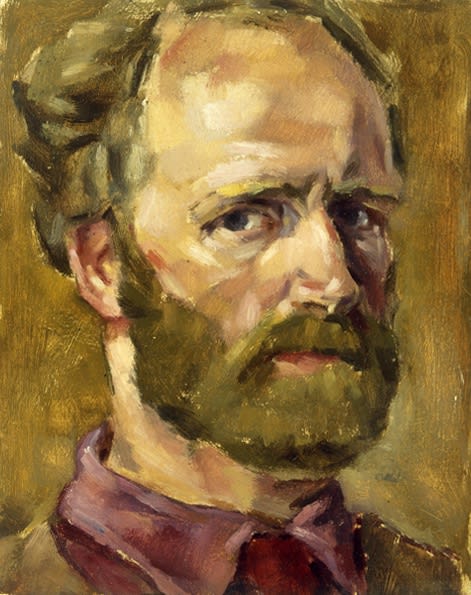1911-1980
Painter and sculptor Cyril Mann was born in London, England 28 May 1911 and raised in Nottingham where, at the age of 12, he was awarded a scholarship to study at the Nottingham School of Art. He left for Canada in 1927, with the aim of becoming a missionary, but instead took up various jobs in British Columbia – including mining, logging and printing – and recommenced painting. In 1933 he returned to London and continued drawing and painting watercolours around the Little Venice canal in Maida Vale in West London. With the assistance of Rev Oliver Fielding Clark, who established a trust fund to assist him, Mann studied the Royal Academy in 1935-38, then continued his art education in Paris, supported by another patron, Erica Marx. He returned to London in 1939 upon the outbreak of the Second World War, and served as a Gunner in the Royal Artillery, but did not paint throughout this period. In 1947 he took up a teaching job at the Central School of Art and exhibited at the Wildenstein Gallery in 1948. After the failure of his marriage, he became isolated, until he met his second wife, Renske, of Dutch-Indonesian origin, in 1959. During the 1950s his work was shown in a mixed exhibition at Erica Brausen's Hanover Gallery. In 1964, Mann moved to Leyton and then, finally, Walthamstow, England, where he died on 7 January 1980.
Be the first to know – Sign Up
Subscribe to our newsletter and be the first to know about everything new at Ben Uri, including the constantly evolving and expansive online content across our exhibitions, collection and research.
We value and respect your privacy. Your personal data will be kept private and processed securely, according to our Privacy Policy. If you change your mind anytime, you can unsubscribe directly when receiving a mail from us (the link will be at the bottom of the email) or contact us.
* denotes required fields
This website uses cookies to improve your experience. If you are not happy with this, you can opt-out below.


